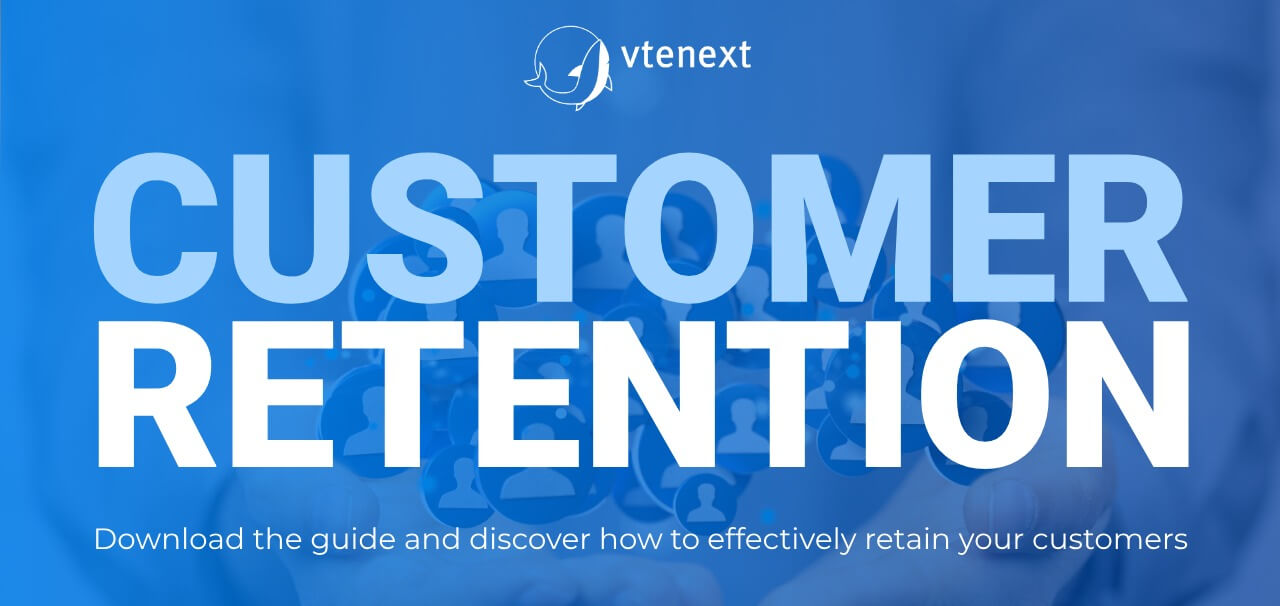How many times have you heard or read the phrase “Acquiring a new customer costs 5 times more than retaining an existing one”? A statement confirmed by facts, if you consider the costs incurred to attract a new audience and bring it to buy from us.
Let’s focus on what it means to retain an existing customer and try to understand if we can undertake a customer retention strategy that leads to a portfolio of customers who not only purchase our products or services regularly, but also follow and support us by talking about our products, writing reviews, embracing with enthusiasm our innovations.
Customer retention and customer loyalty: are they the same thing?
Customer retention is a strategic process aimed at building and maintaining a lasting relationship between a company and its customers. Speaking of customer relationship, we can use two different terms: retention and loyalty. The first indicates the ability to hold the customer over time, for example through churn prevention techniques. The second one refers to true loyalty, which expresses a deeper level of emotional commitment and preference for the brand. Loyalty is based on the creation of a strong and positive bond based on trust, satisfaction and perceived value.
Understanding this distinction helps us understand the loyalty goals we want to achieve, plan the actions to take and decide which metrics to use to measure the results.
From regular customer to loyal customer
Another distinction to keep in mind is that between a regular customer and a loyal customer. There is a difference that may seem subtle, but actually affects the strategy to be adopted. A regular customer is the one who buys regularly from a company but is often very price-sensitive and ready to change brand following convenience.
Think of the world of telecommunications or energy. In these markets, a regular customer facing an attractive new offer quickly changes providers. Customer retention metrics and activities come into play here.
A loyal customer has an emotional bond with the brand, actively preferring it and often becoming a brand advocate. The most obvious example is Apple, a beloved brand that has created loyal customers indifferent to price but more sensitive to the values the company expresses. Surely other names come to mind, for example in the automotive, fashion or food industries.
Customer loyalty strategies aim to create a deep connection and continuously nurture it. Companies who want to take this path can be guided by three principles: the centrality of the customer, the ability to create an exchange of mutual value between company and customer, the use of data as the primary resource for every operational activity.
How to measure customer loyalty
Within customer retention, keeping in mind the distinctions just exposed, we have different metrics available to measure our ability to retain and foster customer loyalty.
The first is the Customer Retention Rate (CRR)
recorded by the company over a specific period of time. To calculate it, subtract the number of existing customers at the end of the period from the number of customers acquired in the same time frame. Then, divide the result by the number of existing customers at the beginning of the period and multiply by 100.
The churn rate
the customer abandonment rate, which is calculated by dividing the number of lost customers in a certain period of time by the number of existing customers at the beginning of the same period, and multiplying the result by 100.
Both metrics help track what happens in the customer base, with the advantage that they can be calculated according to the frequency desired by the company, as the measurement does not require constantly soliciting customers for feedback, reviews and ratings.
Another four indicators help us to assess how well the ability to bring customers to a higher level is progressing. Let’s see them briefly.
The Repeat Purchase Rate (RPR)
calculates the percentage of customers who made more than one purchase in a given period of time, regardless of whether they are historical or newly acquired customers. To calculate the RPR, divide the number of customers who have made more than one purchase in a given period by the total number of customers, and multiply by 100.
It can also be calculated whenever the company desires, but taking into account the specific product lifecycle. For example, cars are sold less frequently than a pack of biscuits.
The Existing Customer Revenue Growth Rate
monitors the increase in revenues generated by the company’s recurring customers. Usually, monthly variations are calculated by subtracting the revenues generated by recurring customers at the end of the period considered the revenues generated by recurring customers at the beginning of the same period, and dividing the result by the total revenues generated by recurring customers at the beginning of the analyzed timeframe.
Customer Lifetime Value (CLV)
allows companies to calculate the value of revenues generated by a single customer. Ideally, CLV should increase or at least remain stable over time. To calculate it, divide the gross annual revenue by the total number of unique customers in that year and multiply the result by the average life cycle of the company’s customers.
The Net Promoter Score (NPS)
detects how likely customers are to remain loyal or turn elsewhere, toward a competitor. In this case, customers are asked to place themselves on a decimal scale that measures their attachment to the company, divided in this way: detractor customers are those who are on the steps ranging from 0 to 6, passive customers are between 7 and 8, while promoters are at the top at levels 9 and 10.
To calculate NPS, subtract the number of promoters from the number of detractors, divide the result by the total number of responses collected and multiply by 100. It is a metric that requires action from the customer and can be useful if monitored over time, through annual, semi-annual or quarterly surveys.
Customer loyalty and customer experience
Customer loyalty is closely linked to customer experience. A positive and memorable experience is crucial for developing loyalty and directly influences the decision to remain loyal to the brand.
In this direction, it is essential to strive for a deep understanding of customer needs by regularly collecting and analyzing customer feedback through surveys, reviews, social media and market research.
A customer who feels heard and understood is more likely to remain attached. In addition, this approach can increase the company’s ability to innovate and adapt to the market and it allows monitoring the quality of its product or service.
Other factors that affect the strength of the bond are customer service and customization. The first is a fundamental touchpoint in customer retention activities and, if addressed to customer success, also strongly contributes to loyalty. Customization makes the customer feel unique and valued. These aspects should be kept in mind when implementing loyalty programs such as point systems or reward systems, studying how to make them exclusive and personalized.
How to foster customer loyalty
There is no lack of technologies to create a customer loyalty strategy that effectively integrates people, processes and tools to pursue both retention and loyalty goals.
CRM and CDP, with features based on Artificial Intelligence and machine learning, collect data from customer interactions and provide a unique view of the customer. All business areas can start from here to create a consistent, coherent and rewarding customer experience. Furthermore, by integrating centralized customer data management with centralized management of business content, personalized and high-quality personal relationships with customers can be established.
A company that values data can develop proactive and predictive capabilities that consolidate and enhance loyalty processes. Being immediately understood – or even anticipated – in their requests is in fact one of the most gratifying sensations for the customer, as well as a very valid reason to keep the relationship with the company over time.
Last but not least, to fuel customer retention processes the company must consistently demonstrate openness and receptivity to the customer’s voice, be attentive to the empathetic component of the relationship, transparent when it comes to establishing expectations, evaluate the achieved results and outline the possible evolution of each relationship.
Download the Guide and discover how to increase your Customer Retention!
An effective Customer Retention strategy can be critical to achieve your organization’s goals.
Find out more downloading our guide!

